Kechen Qin
A Complex KBQA System using Multiple Reasoning Paths
May 22, 2020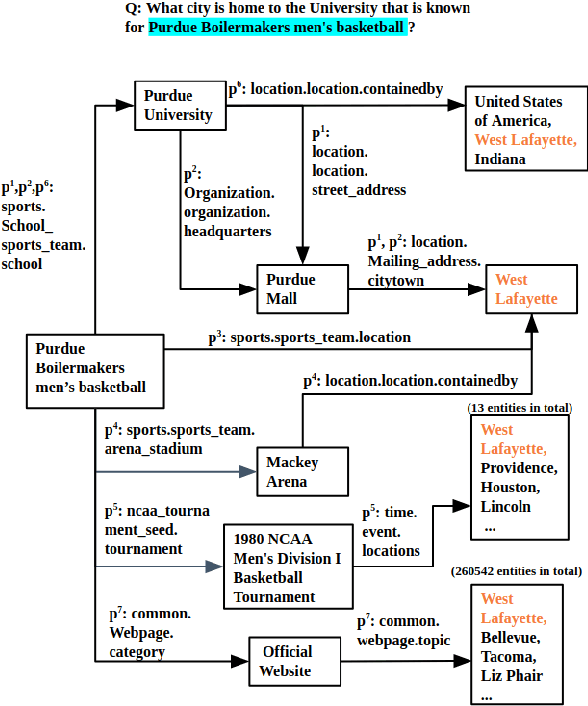

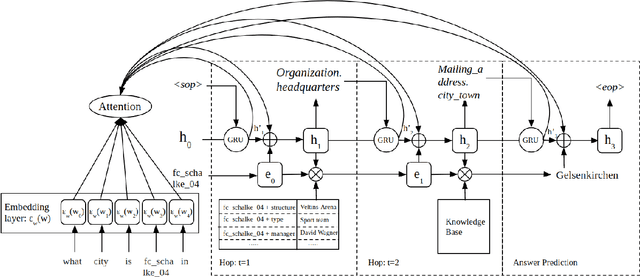
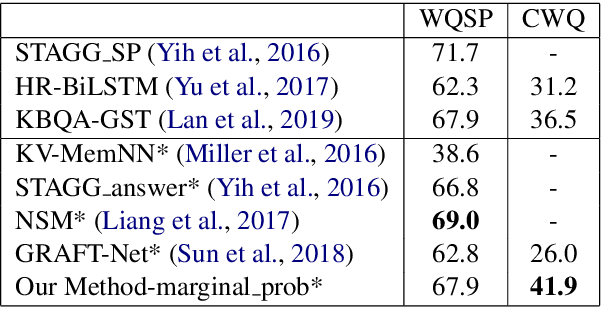
Abstract:Multi-hop knowledge based question answering (KBQA) is a complex task for natural language understanding. Many KBQA approaches have been proposed in recent years, and most of them are trained based on labeled reasoning path. This hinders the system's performance as many correct reasoning paths are not labeled as ground truth, and thus they cannot be learned. In this paper, we introduce an end-to-end KBQA system which can leverage multiple reasoning paths' information and only requires labeled answer as supervision. We conduct experiments on several benchmark datasets containing both single-hop simple questions as well as muti-hop complex questions, including WebQuestionSP (WQSP), ComplexWebQuestion-1.1 (CWQ), and PathQuestion-Large (PQL), and demonstrate strong performance.
Ranking-Based Autoencoder for Extreme Multi-label Classification
Apr 11, 2019



Abstract:Extreme Multi-label classification (XML) is an important yet challenging machine learning task, that assigns to each instance its most relevant candidate labels from an extremely large label collection, where the numbers of labels, features and instances could be thousands or millions. XML is more and more on demand in the Internet industries, accompanied with the increasing business scale / scope and data accumulation. The extremely large label collections yield challenges such as computational complexity, inter-label dependency and noisy labeling. Many methods have been proposed to tackle these challenges, based on different mathematical formulations. In this paper, we propose a deep learning XML method, with a word-vector-based self-attention, followed by a ranking-based AutoEncoder architecture. The proposed method has three major advantages: 1) the autoencoder simultaneously considers the inter-label dependencies and the feature-label dependencies, by projecting labels and features onto a common embedding space; 2) the ranking loss not only improves the training efficiency and accuracy but also can be extended to handle noisy labeled data; 3) the efficient attention mechanism improves feature representation by highlighting feature importance. Experimental results on benchmark datasets show the proposed method is competitive to state-of-the-art methods.
Adapting RNN Sequence Prediction Model to Multi-label Set Prediction
Apr 11, 2019
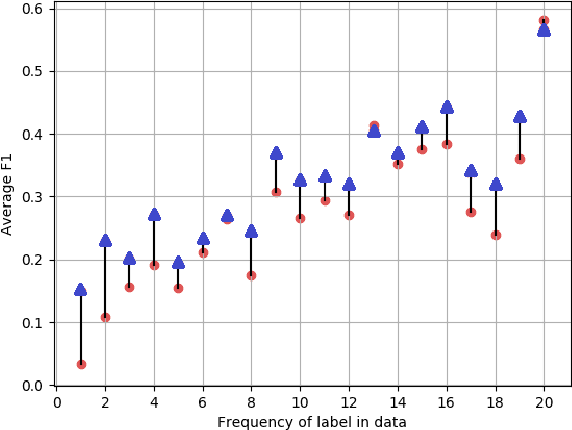

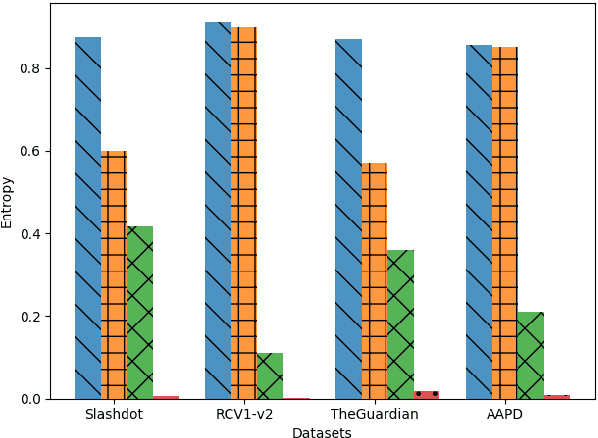
Abstract:We present an adaptation of RNN sequence models to the problem of multi-label classification for text, where the target is a set of labels, not a sequence. Previous such RNN models define probabilities for sequences but not for sets; attempts to obtain a set probability are after-thoughts of the network design, including pre-specifying the label order, or relating the sequence probability to the set probability in ad hoc ways. Our formulation is derived from a principled notion of set probability, as the sum of probabilities of corresponding permutation sequences for the set. We provide a new training objective that maximizes this set probability, and a new prediction objective that finds the most probable set on a test document. These new objectives are theoretically appealing because they give the RNN model freedom to discover the best label order, which often is the natural one (but different among documents). We develop efficient procedures to tackle the computation difficulties involved in training and prediction. Experiments on benchmark datasets demonstrate that we outperform state-of-the-art methods for this task.
Winning on the Merits: The Joint Effects of Content and Style on Debate Outcomes
May 15, 2017Abstract:Debate and deliberation play essential roles in politics and government, but most models presume that debates are won mainly via superior style or agenda control. Ideally, however, debates would be won on the merits, as a function of which side has the stronger arguments. We propose a predictive model of debate that estimates the effects of linguistic features and the latent persuasive strengths of different topics, as well as the interactions between the two. Using a dataset of 118 Oxford-style debates, our model's combination of content (as latent topics) and style (as linguistic features) allows us to predict audience-adjudicated winners with 74% accuracy, significantly outperforming linguistic features alone (66%). Our model finds that winning sides employ stronger arguments, and allows us to identify the linguistic features associated with strong or weak arguments.
Joint Modeling of Content and Discourse Relations in Dialogues
May 14, 2017



Abstract:We present a joint modeling approach to identify salient discussion points in spoken meetings as well as to label the discourse relations between speaker turns. A variation of our model is also discussed when discourse relations are treated as latent variables. Experimental results on two popular meeting corpora show that our joint model can outperform state-of-the-art approaches for both phrase-based content selection and discourse relation prediction tasks. We also evaluate our model on predicting the consistency among team members' understanding of their group decisions. Classifiers trained with features constructed from our model achieve significant better predictive performance than the state-of-the-art.
 Add to Chrome
Add to Chrome Add to Firefox
Add to Firefox Add to Edge
Add to Edge